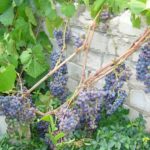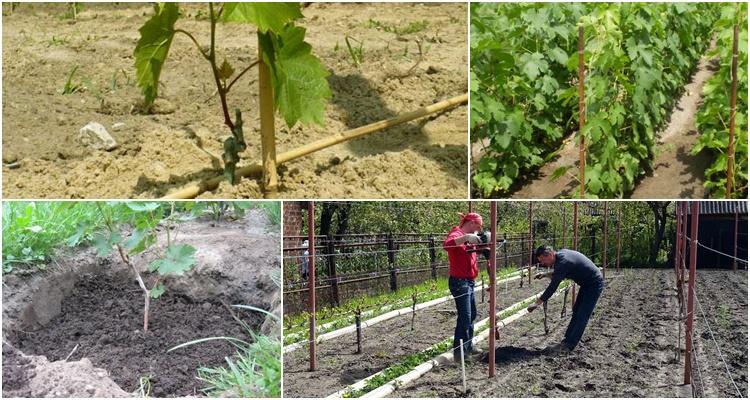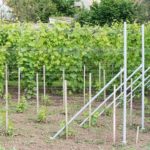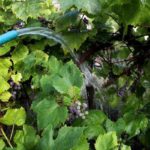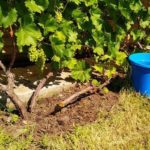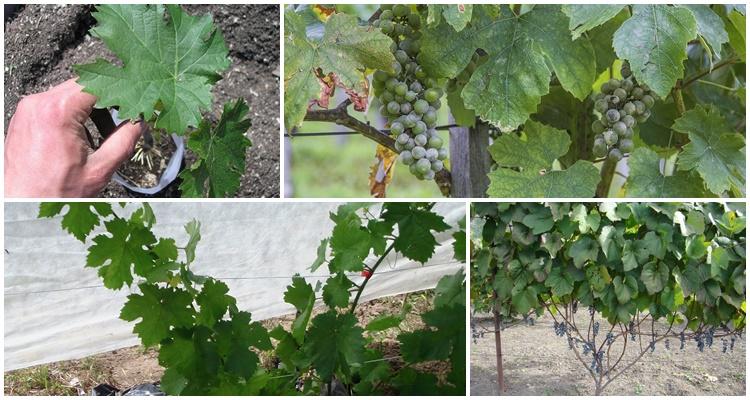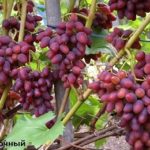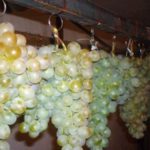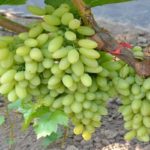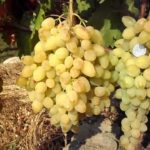The Kishmish Potapenko grape variety was bred by breeders in the Rostov region. The hybrid ripens early and tolerates cool weather well. Therefore, the culture has spread in different regions of the country. Sweet berries can be picked even in Siberia. To get a good harvest, it is enough to follow several agrotechnical recommendations.
Description and characteristics of the variety
Kishmish Potapenko grapes are grown in different climatic zones.The vine tolerates frosts of 20 degrees and heat of 40 degrees Celsius. Fruit ripening begins in early August, and the last bunches are harvested by winegrowers in late autumn. The sugar content in ripened berries sometimes reaches 30%. The absence of seeds and sweet taste determine the directions for use of the variety:
- For the production of raisins.
- In winemaking.
- As a fresh, healthy dessert.
The vine grows up to 5 meters in height. The inflorescences are self-pollinating. The grape clusters are large, conical in shape. The round fruits are dark blue or black in color and covered with a waxy coating. The average weight of the berries is 2 grams.
Advantages and disadvantages of Kishmish black Potapenko grapes
Black Kishmish Potapenko grapes are considered by gardeners to be one of the best varieties.
How to grow fruit crops
In order for the plant to take root on the site, certain rules must be followed.
Boarding time
The fruit crop needs sunlight. The seedlings are transferred to the ground with the onset of warm weather. The earth must warm up completely so that the root system does not freeze and receives the necessary nutrients for further development. Therefore, it is recommended to start planting grapes in mid-spring.
Usually in April the weather becomes more stable. This is important for young shoots that are sensitive to climate fluctuations. Only mature grapes can withstand temperature changes.Seedlings gain enough strength to withstand atmospheric changes 3 years after planting.
Place and soil
The southern side of the plot is suitable for growing grapes. Choose a sunny spot near a hedge or install trellises to support the vines.
Sometimes it is necessary to improve the soil composition:
- Too dense soil is diluted with sand.
- Liming is carried out at high (more than 4%) acidity. For each square meter of vineyard, apply 5 liters of solution.
When growing grapes, standard fertilizing with mineral fertilizers is useful.
Landing
Only strong and healthy shoots are planted in the ground. Select grafted seedlings without signs of disease or damaged areas.
The hole is prepared 2 months before placing planting material:
- Dig a hole 80 centimeters deep. The width is usually made the same size.
- Fill the drainage layer.
- The soil is enriched with peat, humus or other organic matter.
Preliminary preparation is required so that the soil absorbs the elements necessary for the growth of grapes. When placed in a hole, the roots of the seedling are evenly distributed in the internal space and covered with a layer of soil. The shoot is watered with warm water. One bush requires up to 20 liters of liquid.
Features of care
The variety is undemanding to living conditions. The Kishmish Potapenko grape easily tolerates cloudy weather with a small number of sunny days.
Watering and fertilizing
The main conditions for the development of the vine and the formation of fruits is the correct organization of watering. Irrigation is carried out according to the following scheme:
- Initially, the soil is moistened in the spring, when the thermometer crosses the zero mark and remains in the positive zone. Water consumption is about 15 liters per square meter of area.
- The next watering is necessary after pruning the shoots. You will need 2 times more liquid.
- The third and fourth irrigation is carried out before and after flowering. For these purposes, 1 square meter is moistened with 40 liters of water.
During the period of fruit ripening, drying out of the soil is unacceptable. Fertilizers are applied during flowering. Potassium nitrate and superphosphate are used as fertilizing. For 10 liters, 20 and 40 grams of drugs are required, respectively. And in the middle of summer they resort to enriching the soil with ammonium nitrate. First, 3 tablespoons of the substance are added to each bush, then the plant is watered.
Trimming
Shoots are pruned in spring. Up to 8 eyes are left on each stem. In the fall, thin out the vine, removing damaged branches. Over the winter, the culture is completely restored.
Wintering
Before the onset of cold weather, the Kishmish Potapenko grape bushes are divided into 2 halves. Each part is laid on underlying material or covered with earth. Such measures protect the plant from freezing.
Protection from diseases and pests
The variety is resistant to most diseases. Olive spot poses a danger to the crop. The disease causes the leaves to dry out and ends in the death of the vine. As a preventive measure, Bordeaux mixture is used, normalization of watering, as well as getting rid of weeds in the area occupied by grape shoots.
Insects also harm grapes. Treatment with copper-containing preparations gets rid of fleas. And special traps placed near bushes help fight wasp infestations.Nets hung over the bunches will protect from birds.
Collection and storage
The first berries are picked in August and continue to be collected almost throughout the fall. The fruits are stored for a long time and tolerate transportation well. The optimal temperature for keeping cut bunches is considered to be from 1 to 3 °C.
Kishmish Potapenko black grapes are valued by gardeners for their ease of care and the taste of sweet berries. With minimal care, the fruit crop produces high yields.



